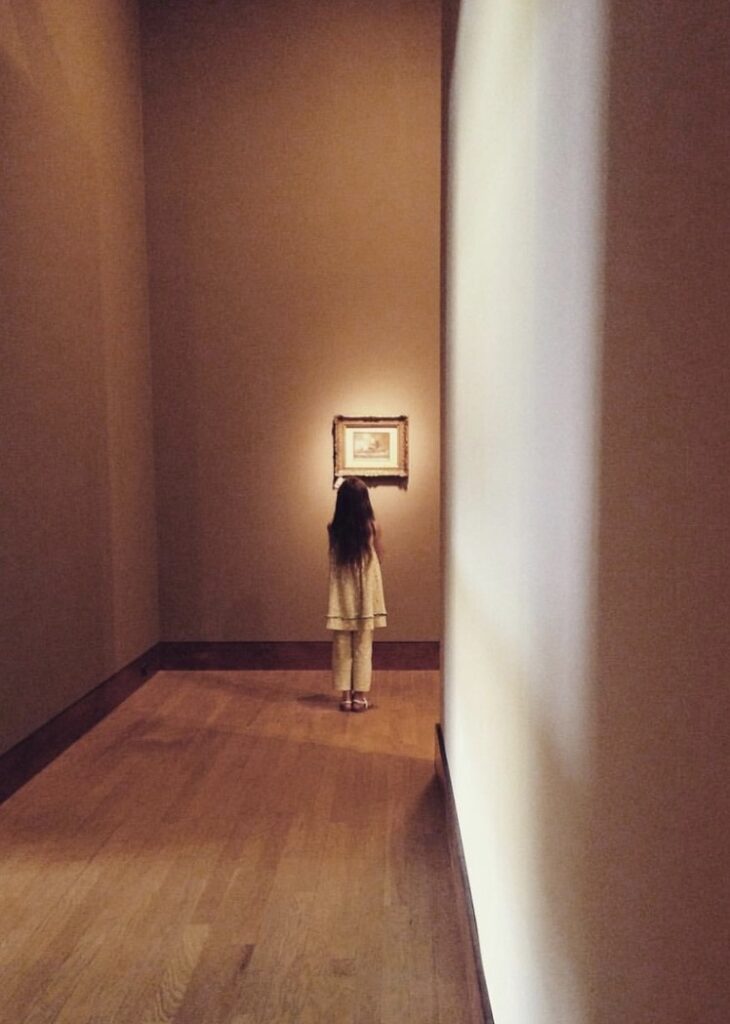How to Make Your Child a Lover of Art
For many homeschool families introducing their children to art can feel overwhelming or of secondary importance. These simple tips will help make your child a lover of art!

As a new believer I somehow had the idea that the term “Christian artist” was an oxymoron. How could one be a Christian and yet align yourself up with the world of art? (Unless, of course, you designed tracts or bumper stickers?)
Soon after coming to know the Lord I read a little booklet on just that subject by Francis Schaeffer that transformed my thinking.
What is Art?
Schaeffer explained that all of the believer’s life is an outgrowth of his relationship with Christ. There are not two boxes for our lives: one for spiritual things and one for secular things. Rather all of our life has spiritual significance.
God is a God of order and beauty. He is the ultimate “creator” and when we are creative, we are actually mirroring His image.
All Art is Not Equal
The other side of the coin is that not all art is created equal. The key question in observing art is “what is the underlying worldview being represented here?”
True art is not just something to decorate a blank spot on the wall, but rather it has a message and meaning behind it.
Our job is to teach our children how to identify what that underlying philosophy is. Instead of the mindless “I don’t know much about art, but I do know what I like”, they will actually be able to tell you which artists they like, and why.
Because classical art and music should be so much a part of all of our lives, the ideal situation would be to simply raise a child in an artistically saturated environment from birth.
What prints are on the walls of the nursery? Are they quality reproductions of Mary Cassat or Jessie Wilcox Smith, or are they poorly done, typical nursery fare?
The price for the quality prints may actually be less in a museum gift shop than the already framed nursery decorations at a toy store. Price is not the issue. It is important that we expose our babies to quality art.

Training Their Eyes for Excellence
The best way to teach someone to know the false is through great familiarity with the true.
Bank tellers in training are given stacks of real money to handle for hours at a time before a counterfeit bill is inserted in the stack. In the same way, a child raised among a few quality pieces of art bristles at exposure to cheap, coarse imitations.
As our children grow up and leave our homes, we will not always be there to look over their shoulders at everything they observe. Our job is to teach them how to “think Christianly.”
When the modern culture bombards them on every side, how will they know the true from the counterfeit? They will know because the true is like an old friend they have known all their lives. They will spot him in any crowd.
Don’t be intimidated if you wouldn’t know a Picasso from a Vlamink – most folks don’t. The exciting thing is there are wonderful resources available for every family! Many of them are free at any public library.

Linking Art to Western Civilization
By purchasing just a few selected helps such as How Shall We Then Live by Francis Schaeffer, you can begin to educate yourselves, so that you may then educate your children.
In his book, Dr. Schaeffer traverses the flow of Western Civilization. He teaches such things as why the Reformation artists were philosophically different from their southern Renaissance neighbors.
By taking each chapter in small doses (this is not light reading) you could easily design a unit study around each time period. (i.e. Ancient Rome, the Middle Ages, the Renaissance, the Reformation, etc.) Using How Shall We Then Live as your philosophical springboard, you could use books such as Great Painters by Pierro Ventura to give your children a visual scope and sequence of the chronological flow of art.
To supplement an overview like that, the libraries are full of lovely, oversized, coffee table books, on every artist imaginable. Let your children grow up paging through these on rainy days with a cozy quilt and a fire in the fireplace. Allow these great paintings and the men and women who created them to become dear friends to them.
Cornerstone Curriculum’s Adventures In Art is designed along just these lines. It integrates Charlotte Mason’s approach to teach children to really observe a few selected pieces of art.
If you live in a metropolitan area, or can get to one, frequent short visits to museums where children can see “their paintings” are unforgettable.
The classical approach of sketching great art in museums is also a worthwhile endeavor – teaching the children to “really know” the painting being studied.

Help for a Lover of Art
Rather than coloring books and directed art materials, give your children quality art supplies for holidays and rewards. A new packet of pastels or a water color set from a real adult art supply store is often less expensive than the kiddie models at the toy stores. A printer is a wonderful source for rolls of paper (print ends) that are often available at no charge.
Once a child has been exposed to exquisite drawing, they may want to be able to obtain technical skills themselves. Certain children will show a gifting in the area of art.
The book we have found most valuable for classical drawing techniques is Bridgman’s Complete Guide to Drawing from Life (Wing Books). It contains over 1000 anatomical drawings and sets the standard in its field. George Bridgman was a teacher at the Art Students League in New York for over 30 years. He taught his students in the old masters method of the study of the human body. This book includes extensive studies of the human hand, the muscles, bones, and proportions of the human anatomy. These disciplines are so often lacking in contemporary art schools.
Anyone Can Become a Lover of Art
Regardless of whether your children ever progresses beyond stick figure drawings themselves, you can still train them to be discerning and fulfilled connoisseurs of the riches of the world of fine art. This is attainable for every family. You as a teacher may find yourself enjoying it even more than all your students!
